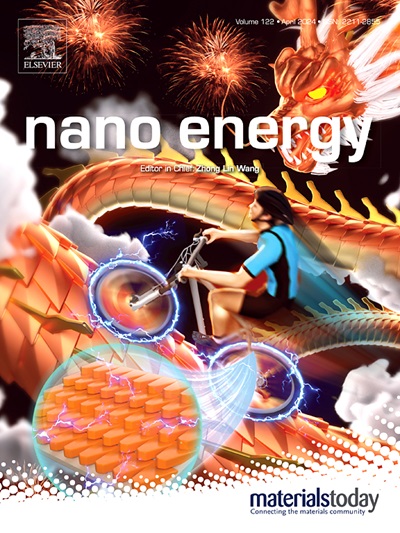In-situ transcribed local coordinations from CoP nanorods pre-catalyst for efficient electrocatalytic oxygen evolution
IF 16.8
1区 材料科学
Q1 CHEMISTRY, PHYSICAL
引用次数: 0
Abstract
Transition metal-based compounds generally undergo dynamic surface changes to form active metal (oxy)hydroxides during the oxygen evolution reaction (OER). However, due to the core-shell structure formed by insufficient surface reconstruction and the complexity of the dynamic evolution process, understanding the origin of the catalytic performance derived from the pre-catalyst itself is a great challenge. Herein, we first reveal that a transcriptional relationship of local coordination between the pre-catalyst and the in-situ generated active species by regulating the lattice strain during phosphating with the aid of the nonequilibrium diffusion Kirkendall effect. The combination of electrochemical, ex-situ X-ray absorption fine structure spectroscopy (XAFS) and in-situ synchrotron radiation Fourier transform infrared spectroscopy (SR-FTIR) characterizations uncover that the variation trend of the first shell Co–O bond length in the active species is inherited from the Co–P bond length in the pre-catalyst and the shortened optimal distance of the second shell dual-Co sites is strongly correlated with the inherent OER activity. Thereby, a relation mapping to modify the coordination structure of the active species via the lattice strain of the pre-catalysts is established. This work not only provides a strategy to regulate OER performance via the lattice strain, but also sheds light on the role of the structural and compositional evolution of catalysts in activity during electrocatalytic reactions.

用于高效电催化氧进化的 CoP 纳米棒前催化剂的原位转录局部配位
在氧进化反应(OER)过程中,过渡金属基化合物通常会发生动态表面变化,形成活性金属(氧)氢氧化物。然而,由于表面重构不充分所形成的核壳结构以及动态演化过程的复杂性,了解前催化剂本身催化性能的来源是一个巨大的挑战。在此,我们借助非平衡扩散柯肯达尔效应,通过调节磷化过程中的晶格应变,首次揭示了前催化剂与原位生成的活性物种之间的局部配位转录关系。结合电化学、原位 X 射线吸收精细结构光谱(XAFS)和原位同步辐射傅立叶变换红外光谱(SR-FTIR)表征发现,活性物种中第一壳 Co-O 键长度的变化趋势继承自预催化剂中的 Co-P 键长度,而第二壳双 Co 位点最佳距离的缩短与固有的 OER 活性密切相关。因此,通过前催化剂的晶格应变改变活性物种配位结构的关系图谱已经建立。这项工作不仅提供了一种通过晶格应变调节 OER 性能的策略,还揭示了催化剂的结构和组成演变在电催化反应活性中的作用。
本文章由计算机程序翻译,如有差异,请以英文原文为准。
求助全文
约1分钟内获得全文
求助全文
来源期刊

Nano Energy
CHEMISTRY, PHYSICAL-NANOSCIENCE & NANOTECHNOLOGY
CiteScore
30.30
自引率
7.40%
发文量
1207
审稿时长
23 days
期刊介绍:
Nano Energy is a multidisciplinary, rapid-publication forum of original peer-reviewed contributions on the science and engineering of nanomaterials and nanodevices used in all forms of energy harvesting, conversion, storage, utilization and policy. Through its mixture of articles, reviews, communications, research news, and information on key developments, Nano Energy provides a comprehensive coverage of this exciting and dynamic field which joins nanoscience and nanotechnology with energy science. The journal is relevant to all those who are interested in nanomaterials solutions to the energy problem.
Nano Energy publishes original experimental and theoretical research on all aspects of energy-related research which utilizes nanomaterials and nanotechnology. Manuscripts of four types are considered: review articles which inform readers of the latest research and advances in energy science; rapid communications which feature exciting research breakthroughs in the field; full-length articles which report comprehensive research developments; and news and opinions which comment on topical issues or express views on the developments in related fields.
 求助内容:
求助内容: 应助结果提醒方式:
应助结果提醒方式:


